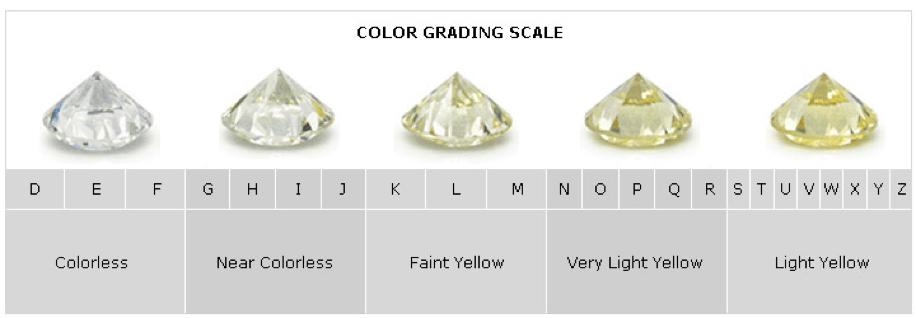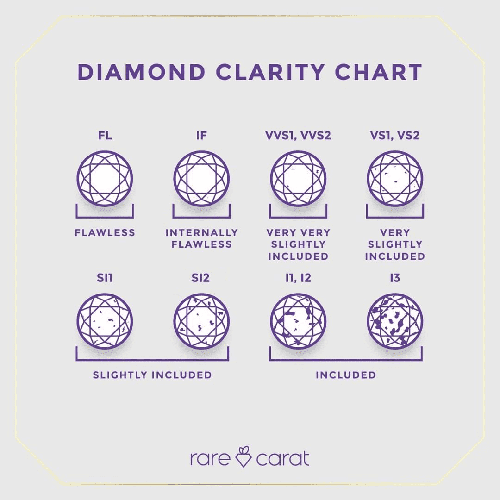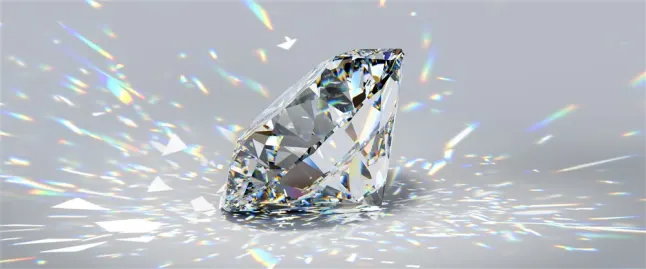The Ultimate Guide to the Diamond 4C's
Ah, the 4C’s, the backbone of understanding diamonds. These categorizers help you understand how good the diamond is- enough so you can get a good idea of what the stone looks like even without seeing it first! But what are they? What do they mean? What's the most important? Well, rest assured- we’ll cover all these questions so you can get the hang of the lingo and really know what you’re looking for!
What are the 4C’s?
This easily explains the following 4 characteristics of cut diamonds- Carat, Color, Clarity and Cut. Each one represents a part of how the diamond looks and interacts with your eye. They go into the pricing, and value of the diamond. Once you have a basic understanding of them, it’s easy to know what you want to look for!
Carat
This is the name for the weight of the diamond. It can be expressed as carats, or ct., or cts. A metric carat is 200 milligrams (a lot less than you’d think, right?). Each carat is divided into 100 “points”, which means you may also hear the term “pointer”. This would be referenced by jewelers such as in the case of a diamond weighing .25cts, as a “25 pointer”.
With everything else being equal, each point will increase the price of the diamond. However, you could have two diamonds that weight the same carat weight, but have substantially different prices and value, depending on the other 3C’s- clarity, cut and color.
The larger the carat weight of the diamond, typically the more expensive, because bigger diamonds are more rare. Especially when the diamond has good color and clarity, the price will significantly increase.
Color
Natural diamonds have a huge color range. But most diamonds are somewhere between totally colorless, to yellow, to brown, and all the ranges in between. The GIA set up a lettering system to help understand the color of the diamond. Starting at the letter D and going all the way to Z, from colorless “white” to very obvious color to the diamond.
They start the color grade at D- this is the most rare of colors, because it means there were no other external factors when the diamond was growing to cause color to show up.

Colorless The range D-F are all in the “colorless” category. There’s no tint of color to these guys- they are just clear and sparkly and perfect! However, E and F are going to differ slightly in transparency. This is something even trained gemologists may have difficulty telling the 3 apart from each other, they are that close!
Near Colorless G-J are going to have a slight tint of yellow, only visible when looking through the back of the stone. These are called “near colorless”. Unless they are side by side, and even then it could be tricky- you won’t see too much of a difference with this color grade.
Faint K-M is where you’ll start to notice a slight tint of color, face up. Usually this isn’t too much of an obvious color, but depending on the cut (see, they all play off each other!) you may notice it more. Especially in ovals emeralds, and princess (square) cuts.
Setting a diamond in this grouping in a yellow gold ring, will kind of trick your eye to not notice the faint yellow color, and will appear more white.
If you are looking to set this diamond in a platinum, or white gold setting, you many notice the color difference slightly. If you want the diamond to appear clear as possible in a white metal, probably best to try to stick with diamonds in the D-J range.
However, some people like the idea of a hint of color in a light setting, it’ll show it off more. Just know the lighter the setting, the more it will showcase color. Not always a bad thing!
Very Light N-R is going to show up with yellow tones even more. These will be much more noticeable than any of the others, but still more of a muted color- kind of like if you took a glass of water and added a drop of yellow food dye.
Light S-Z will be obviously yellow. Anything after the Z grade will then move to “fancy” colors.
Clarity
Ah, clarity. This grading system is going to reference the number of internal inclusions (the little spots noticeable inside the diamond) and external blemishes in or on the diamond. GIA grades diamonds at 10x magnification, by the number, size and placement of these imperfections. The more noticeable, the farther down on the grade it goes.


FL- Flawless is going to indicate that the diamond inside and out, has absolutely no imperfections.No inclusions internally, or blemishes outwardly. The most rare of all clarity grades!
IF- Internally flawless mean that internally, the diamond is perfect. However, there may be blemishes on the outside. These would occur after the diamond was created by nature, during the cutting, mounting or wearing of the stone.
These could be polish lines on the surface, abrasion, scratches, or an extra facet placed by the cutter to name a few.
VVS1 and VVS2- These letters stand for “very, very slight” to the first and second degree. These are generally going to be considered to be “eye clean”. This means that to the naked eye, this diamond is going to look flawless. Only under magnification will you see the inclusions present.
This can include tiny pinpoints, that even under a microscope are hard to see. But, they are still in the diamond, so they have to be graded. You won’t find any big carbon inclusions, crystals or anything obvious to the eye.
The difference between VVS1 and VVS2 is just that they still both have very (very) minor inclusions, but the 2 may have just a few more inclusions, or the same amount but in a more obvious place.
VS1 and VS2 Very Slightly Included to the first and second degree. Similar grading factors to the previous group, but these will be slightly more noticeable. Nothing drastic, but there may be a a small inclusions, possibly closer to the table. Not big enough to be an eye-sore, but more than just tiny pinpoints.
SI1 and SI2 Slightly included is going to be (slightly) noticeable, if you look closely at the diamond. This is going to include more obvious inclusions under the table, where it’s easiest to see them.
I1, I2, and I3 Meaning Included to the first, second, and third-degree. These are going to be the most obvious of the bunch, with I3 being reserved for very included diamonds- you may see crystals with a dark color to them, feathers (nice word for a break) cutting across the table, or clouds (groupings of pinpoints, or other characteristics) that can make the diamond hazy looking.
Cut
And lastly, cut. This is by far the most important of the 4C's! The one that can make or break a diamond - the cut is what showcases the diamond's fire and brilliance and sparkle! But if this is off, you won’t see the dazzle the diamond has locked inside.
The GIA bases their cut grade off of 7 factors: brightness, fire, scintillation, weight ratio, durability, polish and symmetry. This will range from Excellent to poor.

Ex (excellent) This cut will grade corresponds to a diamond that has very aligned facets, good and proportionate angles, which allows maximum fire (flashes of color) and brilliance (flashes of white light). This diamond will reflect almost all the light that goes in. The girdle (flat part around the middle) will be not too thin, and not too thick, and the diamond proportions will be right in the middle- not shallow, not deep.
VG (very good) Will properly reflect light, very similar to the EX cut, but may offer slightly less fire or brilliance than the prior. This will also offer a very good reflection of light.
G (good) Has significant fire and brilliance, may be slightly shallow or deep. May have a slightly thin-thick girdle, or a few misaligned facets, but not enough to negatively affect the reflection of light.
F (fair) Creates a fair amount of fire and brilliance, but not overly spectacular. There may be an issue with proportions, too deep or too shallow, allowing light to escape from the sides or bottom to not produce a satisfying pattern or display of light reflection.
P (poor) Could have misaligned facets, be quite shallow or overly deep, very little fire or scintillation, does not have an intriguing pattern, with a poor reflection of light. These diamonds usually are very dark, even though they don’t have many inclusions. The light will leak from the bottom or sides, and not reflect back to you.
Rare Carat Ideal If you’ve poked around the site, you’ll see that we have our own set standard for cut! We’ve taken all the diamond cut shapes we offer and found the perfect set of parameters to filter any stone out that doesn’t meet the best of standards. When you're searching on our site, just set the cut grade slider to RC Ideal to see the best cut diamonds listed!
So now you know! You must feel like a pro after all that reading! As we learned, this means that all of the 4C’s are equal- one can be totally overlooked if another is not up to par. As always, our gemologists are here to help you decipher any diamond you have questions on, and now you have a better idea of what to look for, go out and find that dream diamond!
You can apply what you’ve learned by browsing Rare Carat’s diamond engagement rings sorted by each C.

